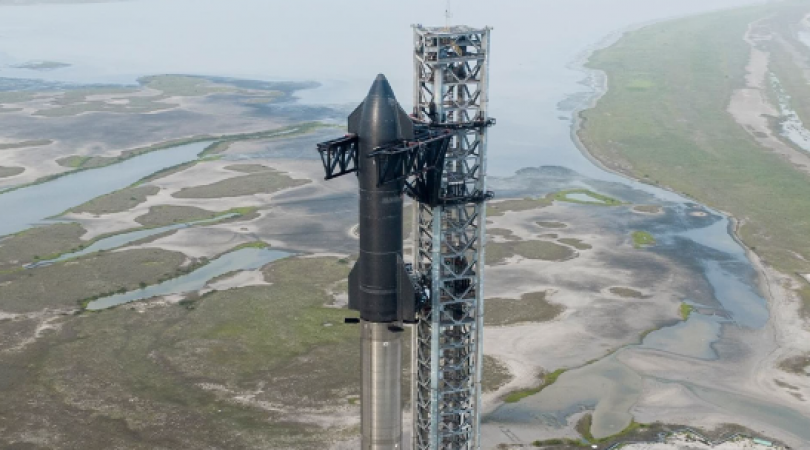
USA: Early on Monday, Elon Musk's SpaceX finished up final preparations for the brief but highly anticipated uncrewed test flight from the Texas Gulf Coast that would be the first use of its potent new Starship rocket system in space.
The two-stage rocketship, which is 394 feet (120 metres) tall and taller than the Statue of Liberty, was scheduled to launch from the SpaceX facility in Boca Chica, Texas, during a two-hour window that begins at 8 a.m. EDT (1200 GMT).
Whether or not the test mission's goals are fully achieved, it still marks a significant step towards SpaceX's ultimate goal of returning people to the moon and eventually Mars. This is also the main objective of a revitalised NASA spaceflight programme designed to incorporate the Starship.
Also Read: The James Webb Telescope findings could completely refute what we currently know about the Big Bang
But even just launching a spacecraft that, if it takes off successfully, will become the most potent rocket on Earth presents enormous challenges for SpaceX.
The best-case scenario, according to Musk, would provide important information about how the vehicle ascends to space and how it will fly back to Earth. "Success is not what should be expected," Musk said to a private Twitter audience on Sunday night.
Tomorrow probably won't go well, he predicted. "It's just fundamentally a very difficult thing."
The California-based company earlier on Sunday posted on Twitter that its launch teams were continuing with flight preparations while closely monitoring any potential wind-shear conditions in the forecast that might cause a delay.
For the flight to be delayed rather than take off on Monday, according to Musk, "it's more likely" on Sunday night. On Tuesday and Wednesday, SpaceX has backup launch opportunities for roughly the same times.
Both the lower-stage Super Heavy booster rocket and the upper-stage Starship cruise ship it will launch into space are intended to be reusable parts that can return to Earth for soft landings, as SpaceX's smaller Falcon 9 rocket has done repeatedly.
For the disposable first test flight to space, which should last no longer than 90 minutes, neither stage will be recovered.
The Super Heavy booster has never left the ground, despite five sub-space flights by Starship cruise vessel prototypes up to 6 miles (10 km) above Earth in recent years.
SpaceX tested the booster in February by firing 31 of its 33 Raptor engines for about 10 seconds while it was bolted vertically atop a platform.
Just last Friday, the Federal Aviation Administration approved a licence for the fully stacked rocket system's first test flight, removing the last remaining legal barrier to the eagerly anticipated launch.
If everything goes according to plan on Monday, all 33 Raptor engines will fire at once to launch the Starship on a flight that nearly completes a full orbit of the Earth before it re-enters the atmosphere and free-falls into the Pacific at supersonic speed off the northern Hawaiian islands, about 60 miles (97 km) away.
The Super Heavy booster is anticipated to carry out the initial stages of a controlled return flight after separating from the Starship before crashing into the Gulf of Mexico.
The starship's scorching re-entry over the Pacific will test its capacity to steer itself aerodynamically using large flaps and for its heat shielding to endure the intense friction created as it falls through the atmosphere.
The ship will approach like a meteor, according to Musk. This is the first leg of a protracted journey that will involve numerous flights.
He added that extra Super Heavy boosters were already on the dock in Boca Chica for upcoming test flights.
Also Read: Now that a song is playing, YouTube Music automatically tracks the lyrics
As intended, the Starship rocket has nearly twice the power of NASA's own Space Launch System (SLS), which launched a NASA cruise ship called Orion on its first unmanned flight to orbit in November and completed a 10-day trip around the moon and back.